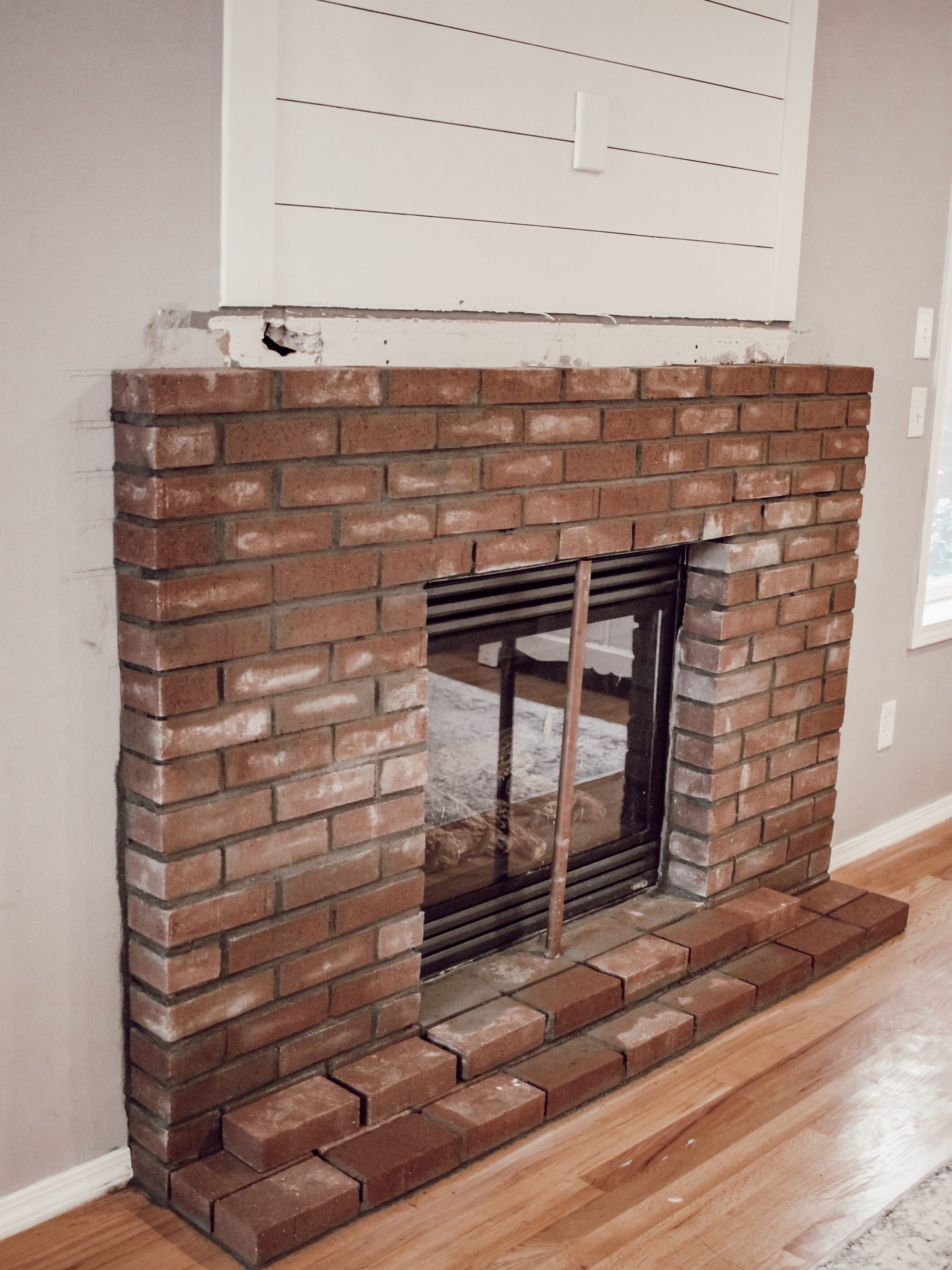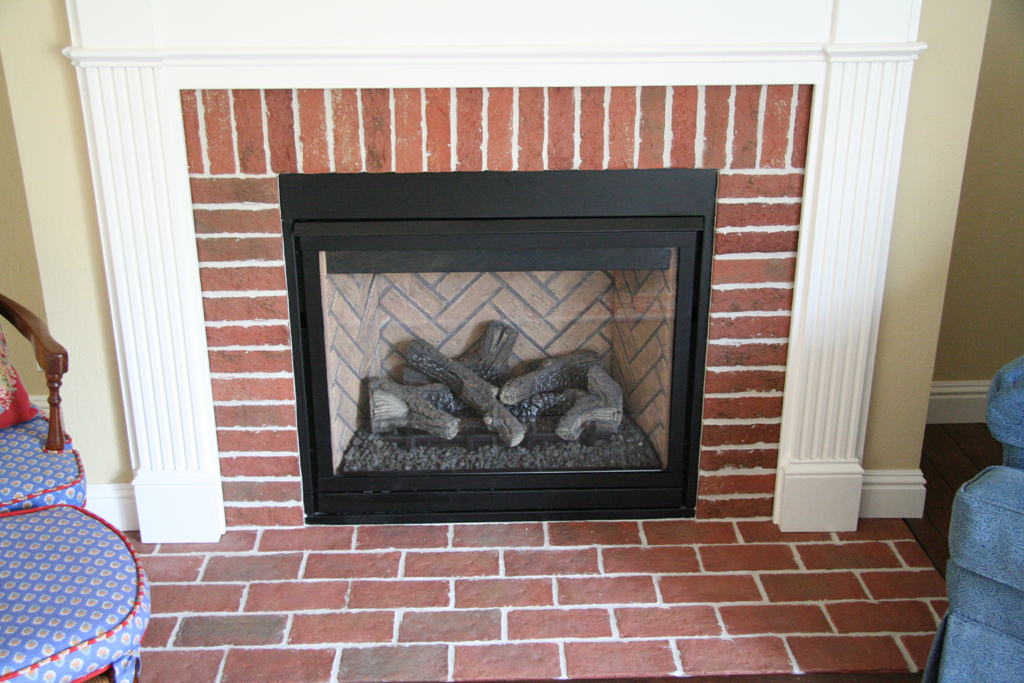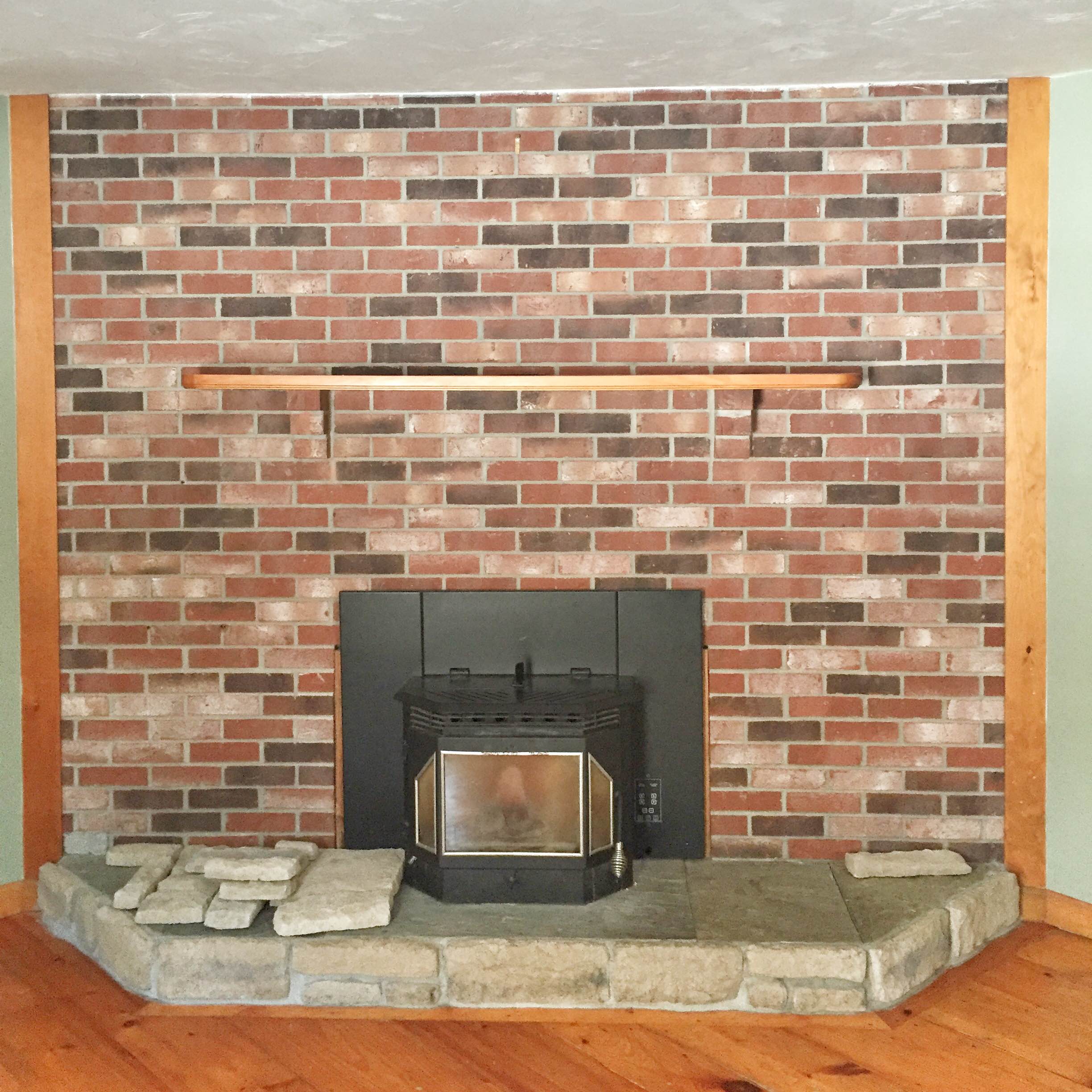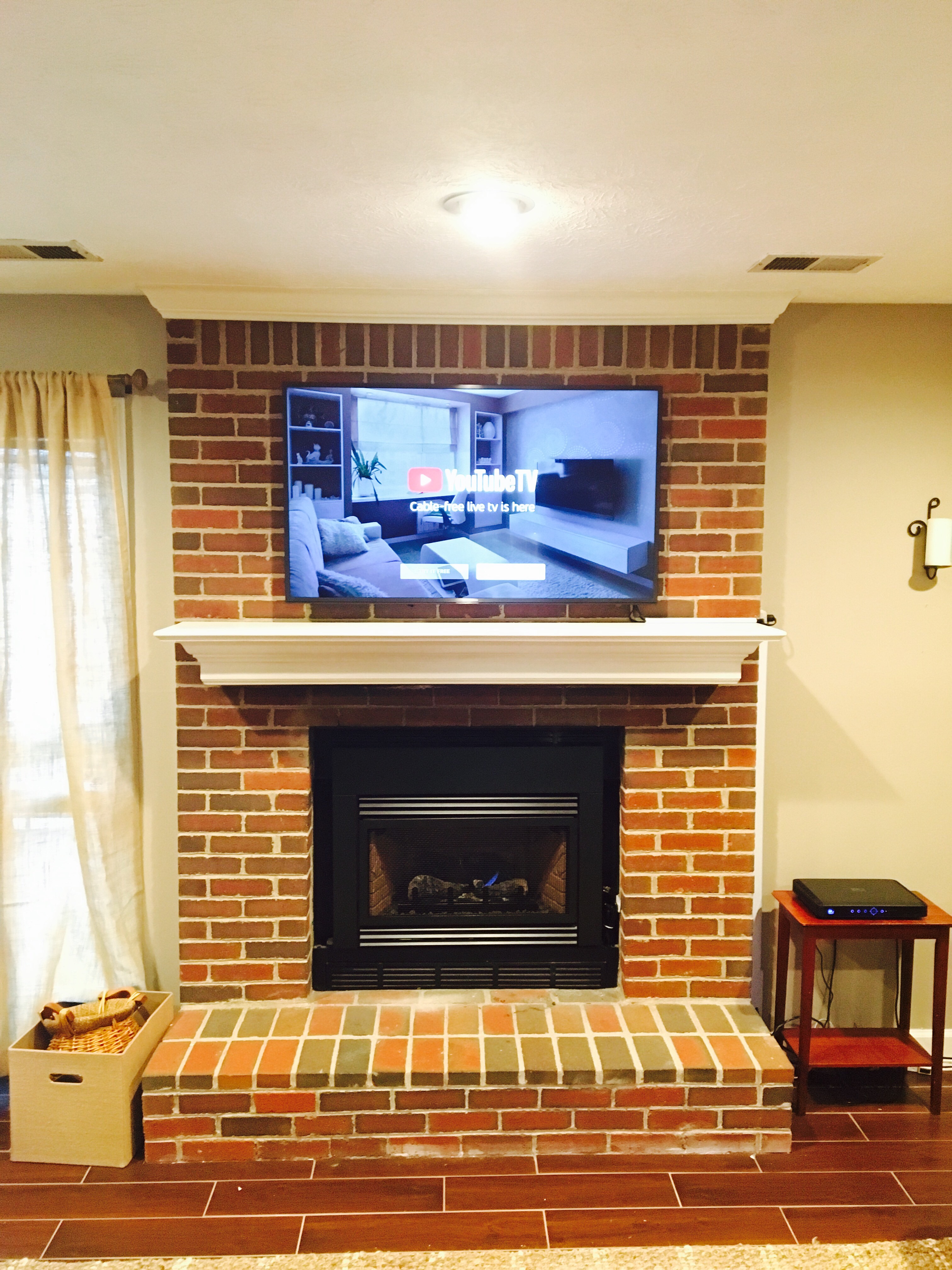Framing Over a Brick Fireplace
Framing over a brick fireplace can transform a dated, rustic look into a sleek, modern focal point in any room. Whether aiming for a contemporary finish or simply wanting to change the aesthetic, framing provides a versatile solution. This guide will walk you through the process, from preparation to finishing touches, ensuring your project succeeds.

Preparing for the Project
Evaluating the Existing Structure
Before starting any framing work, it’s crucial to thoroughly evaluate the existing brick fireplace. Check for structural integrity—look for loose bricks, cracks, or any signs of damage. It’s important to ensure the fireplace is stable and can support the additional weight of the framing materials. Address any necessary repairs before proceeding to avoid complications during the framing process.
Gathering Necessary Tools and Materials
Proper preparation involves having the right tools and materials on hand. Essential tools include a level, measuring tape, hammer, nails, drill, screws, and a saw. For materials, you’ll need wood for the frame, drywall, adhesive, and finishing supplies such as paint or tiles. Having everything ready before you start will streamline the process and reduce interruptions.
Measuring and Planning the Layout
Accurate measurements are the foundation of a successful framing project. Measure the height, width, and depth of the brick fireplace, and plan your layout accordingly. Consider the placement of any additional features such as shelving, mantels, or built-in units. Detailed planning at this stage will save time and prevent mistakes later on.

Clearing the Work Area
Create a safe and efficient workspace by clearing the area around the fireplace. Remove any furniture, decorations, or obstacles that could hinder your work. Protect the floor with drop cloths or plastic sheeting to catch debris and make cleanup easier. A tidy work environment helps maintain focus and safety throughout the project.
Ensuring Safety Precautions
Safety should always be a priority. Wear appropriate protective gear, including gloves, safety glasses, and a dust mask. Ensure the area is well-ventilated, especially if you’re working with adhesives or paint. Keep a first-aid kit nearby and familiarize yourself with basic emergency procedures in case of accidents.
Preparing the Brick Surface
Before attaching the frame, the brick surface needs to be prepared to ensure proper adhesion. Clean the brick thoroughly to remove any dust, soot, or debris. Use a wire brush and a vacuum to get into the crevices. If the surface is uneven, consider applying a skim coat of mortar to create a smooth, level base for the frame.

Building the Frame
Choosing the Right Wood
Selecting the right type of wood for your frame is crucial. Opt for kiln-dried lumber, which is less likely to warp or shrink over time. Common choices include pine, fir, or engineered wood, each offering durability and ease of use. Ensure the wood is straight and free from defects to create a sturdy frame.
Cutting and Assembling the Frame
Accurate cutting and assembly are essential for a professional finish. Use a miter saw to make precise cuts according to your measurements. Assemble the frame on a flat surface, securing the joints with screws or nails. Double-check the dimensions and ensure the frame is square before proceeding to installation.
Attaching the Frame to the Brick
Securing the frame to the brick surface requires careful technique. Use masonry anchors or Tapcon screws, which are specifically designed for masonry applications. Pre-drill holes into the brick and insert the anchors before attaching the frame. Ensure the frame is level and securely fastened to avoid any movement or instability.

Adding Cross Supports
For added stability, incorporate cross supports within the frame. These horizontal and vertical braces help distribute weight evenly and prevent sagging. Position the supports strategically to align with any shelving or built-in units planned for the finished design. Secure them with screws to maintain a solid structure.
Insulating Around the Fireplace
Insulation is an important step, particularly if the fireplace will be used regularly. Use heat-resistant insulation materials to fill gaps around the frame, ensuring there are no drafts or heat loss. This not only improves energy efficiency but also protects the surrounding structure from heat damage.
Checking for Level and Square
Before proceeding to the next stage, double-check that the frame is level and square. Use a spirit level to verify horizontal and vertical alignment. Make any necessary adjustments now to avoid complications during drywall installation or finishing. A perfectly aligned frame ensures a seamless and professional final result.

Interesting Articles You May Want to Check:

Installing Drywall
Measuring and Cutting Drywall
Precision is key when cutting drywall to fit around your framed fireplace. Measure each section carefully, accounting for any outlets, vents, or features. Use a utility knife to score the drywall before snapping it to ensure clean edges. Double-check your cuts before attaching the drywall to avoid waste and ensure a perfect fit.
Securing Drywall to the Frame
Attach the drywall to the frame using drywall screws, ensuring they are evenly spaced for maximum support. Begin at one end and work systematically to the other, pressing the drywall firmly against the frame. Use a screw gun to sink screws just below the surface without breaking the paper to maintain a smooth finish.
Taping and Mudding Seams
Seams between drywall panels need to be taped and mudded for a seamless finish. Apply drywall tape over the seams, pressing it firmly into place. Use joint compound to cover the tape, feathering the edges to blend with the drywall surface. Allow the compound to dry completely before sanding it smooth.

Sanding for a Smooth Finish
Sanding is a critical step in achieving a professional look. Use fine-grit sandpaper to smooth the dried joint compound, taking care to blend the edges seamlessly with the drywall. Work in a well-ventilated area and wear a dust mask to protect yourself from airborne particles. Wipe down the surface with a damp cloth to remove dust before priming.
Priming and Painting Drywall
Prime the drywall to prepare it for painting. Use a high-quality primer to seal the surface and provide a uniform base for paint. Once the primer is dry, apply your chosen paint color in even coats. Consider using a heat-resistant paint if the fireplace will be used regularly, ensuring durability and safety.
Finishing Touches and Details
Complete the look with finishing touches such as trim, baseboards, or crown molding. These details enhance the overall aesthetic and hide any imperfections at the edges of the drywall. Paint or stain the trim to match the rest of the design, and secure it in place with finishing nails or adhesive.

Enhancing with Built-In Features
Designing Built-In Shelves
Built-in shelves add both functionality and visual interest to your framed fireplace. Plan the design to complement the overall aesthetic of the room, considering the height, width, and depth of each shelf. Use high-quality wood or MDF for the shelves, ensuring they are sturdy enough to hold decorative items or media equipment.
Constructing and Installing Shelves
Construct the shelves using precise measurements and quality materials. Assemble the shelves on a flat surface before attaching them to the frame. Use brackets or cleats for additional support, and ensure each shelf is level and securely fastened. Consider incorporating adjustable shelves for added versatility.
Creating a Custom Mantel
A custom mantel can be a stunning centerpiece for your fireplace. Choose a design that matches your style, whether it’s a rustic beam, a sleek modern slab, or an ornate traditional mantel. Construct the mantel from durable wood or stone, and ensure it is properly secured to the frame. Add decorative elements such as corbels or trim for extra flair.

Incorporating Media Units
Incorporating media units into your framed fireplace can enhance its functionality. Plan for built-in cabinets or spaces to house electronic devices, ensuring proper ventilation and cable management. Use sturdy materials and secure the units to the frame, making sure they are level and aligned with the overall design.
Adding Decorative Elements
Decorative elements can elevate the look of your framed fireplace. Consider adding tile, stone veneer, or shiplap for texture and interest. Plan the layout carefully, and use appropriate adhesive and grout for a professional finish. These elements can create a focal point that draws the eye and enhances the room’s aesthetic.
Lighting and Electrical Considerations
Lighting can dramatically enhance the appeal of your fireplace. Consider installing recessed lights, sconces, or LED strip lighting to highlight the fireplace and any built-in features. Plan the electrical layout, ensuring compliance with local building codes. Consult an electrician if necessary to safely install and wire the lighting.

Applying Finishing Materials
Choosing the Right Finish
Selecting the right finishing materials is crucial for achieving the desired look. Consider the overall style of your home and the function of the fireplace. Options include paint, stain, tile, or stone veneer. Each material offers a distinct look and requires specific preparation and application techniques.
Installing Tile or Stone Veneer
Tile or stone veneer can add a luxurious touch to your framed fireplace. Choose materials that complement the room’s decor and are suitable for high-temperature areas. Apply adhesive to the back of each tile or stone piece and press it firmly into place. Use spacers to maintain even gaps, and finish with grout to secure and seal the material.
Painting or Staining Wood
If you prefer a wood finish, painting or staining can provide a polished look. Sand the wood surfaces to remove any rough spots, then apply primer if you’re painting or a wood conditioner if you’re staining. Follow with your chosen paint or stain, applying multiple coats as needed for a rich, even color. Seal the finish with a clear topcoat for durability.
Sealing and Protecting Surfaces
Sealing is essential for protecting your finished surfaces. Use appropriate sealants for the materials you’ve chosen, whether it’s grout sealer for tile, polyurethane for wood, or a protective coating for paint. Apply the sealant according to the manufacturer’s instructions, ensuring all surfaces are thoroughly covered and protected.
Adding Final Trim and Molding
Trim and molding can add a finishing touch to your framed fireplace. Choose styles that match your overall design, such as baseboards, crown molding, or decorative trim. Measure and cut the pieces accurately, and secure them with finishing nails or adhesive. Fill any gaps or nail holes with caulk or wood filler, and paint or stain to match the rest of the fireplace.
Inspecting the Final Product
Once all finishing materials are applied, inspect the entire project for any imperfections or areas that need touch-ups. Check for gaps, uneven surfaces, or missed spots in the paint or stain. Make any necessary adjustments to ensure a flawless finish. A thorough inspection ensures your framed fireplace looks professional and is built to last.

Maintenance and Care
Regular Cleaning and Upkeep
Regular cleaning is essential to maintain the appearance and functionality of your framed fireplace. Dust the surfaces regularly and clean any tile or stone veneer with a mild detergent and water. Avoid using abrasive cleaners that could damage the finish. Clean the mantel and shelves to keep them free of dust and debris.
Inspecting for Wear and Damage
Periodically inspect your framed fireplace for signs of wear or damage. Check for cracks in the drywall, loose tiles, or peeling paint. Address any issues promptly to prevent further damage. Regular inspections ensure the longevity and safety of your fireplace.
Repainting and Touch-Ups
Over time, the paint or stain on your framed fireplace may show signs of wear. Touch up any chipped or faded areas with matching paint or stain. Repaint or re-stain the entire surface as needed to keep it looking fresh and new. Proper maintenance extends the life of your finish and keeps your fireplace looking its best.
Caring for Built-In Features
Built-in shelves and media units require regular care to maintain their appearance and functionality. Dust the shelves and clean any electronics regularly. Check for loose screws or brackets and tighten them as needed. Proper care ensures your built-in features remain sturdy and attractive.
Seasonal Maintenance Tips
Seasonal maintenance can help preserve your framed fireplace through different weather conditions. In colder months, check for drafts and ensure the insulation is intact. In warmer months, inspect for any signs of humidity or moisture damage. Adjust your maintenance routine according to the season to protect your fireplace year-round.
Long-Term Preservation Strategies
Long-term preservation involves proactive care and maintenance. Keep the fireplace area dry and free from excessive humidity. Use protective covers if necessary, and avoid placing heavy objects on shelves that could cause warping or damage. Regular care and attention ensure your framed fireplace remains a beautiful and functional focal point for years to come.

Common Mistakes to Avoid
Neglecting Proper Measurements
Accurate measurements are crucial for a successful project. Failing to measure precisely can lead to misaligned frames, uneven surfaces, and wasted materials. Always double-check measurements and use reliable tools to ensure accuracy.
Skipping Surface Preparation
Skipping the preparation stage can result in poor adhesion and an unprofessional finish. Always clean and smooth the brick surface before attaching the frame. Proper preparation creates a stable base for your project.
Using Inadequate Fasteners
Using the wrong type of fasteners can compromise the stability of your frame. Ensure you use masonry anchors or Tapcon screws designed for brick surfaces. Proper fasteners provide secure attachment and long-lasting stability.
Ignoring Insulation Needs
Neglecting insulation can lead to drafts and energy loss. Always insulate around the fireplace with heat-resistant materials. Proper insulation improves energy efficiency and protects the surrounding structure from heat damage.
Overlooking Safety Precautions
Safety is paramount when working on a fireplace framing project. Failing to use protective gear, ventilate the area, or follow safety guidelines can lead to accidents. Always prioritize safety to prevent injuries and ensure a successful project.

What type of wood is best for framing over a brick fireplace?
Kiln-dried lumber is the best choice for framing over a brick fireplace. It is less likely to warp or shrink, providing a stable and durable structure. Common options include pine, fir, and engineered wood. Ensure the wood is straight and free from defects for the best results.
How do I secure the frame to the brick surface?
To secure the frame to the brick surface, use masonry anchors or Tapcon screws. Pre-drill holes into the brick and insert the anchors before attaching the frame. This method ensures a strong and stable attachment, preventing movement or instability.
Can I install built-in shelves with a framed fireplace?
Yes, you can install built-in shelves with a framed fireplace. Plan the design to complement the overall aesthetic of the room and ensure the shelves are sturdy enough to hold decorative items or media equipment. Use quality materials and secure the shelves to the frame with brackets or cleats.
What type of insulation should I use around the fireplace?
Use heat-resistant insulation materials around the fireplace to prevent drafts and heat loss. This improves energy efficiency and protects the surrounding structure from heat damage. Common options include fiberglass or mineral wool insulation designed for high-temperature areas.
How do I maintain the finish on my framed fireplace?
Regular cleaning and upkeep are essential for maintaining the finish of your framed fireplace. Dust surfaces regularly and clean tile or stone veneer with mild detergent and water. Inspect for wear or damage periodically and touch up paint or stain as needed. Seasonal maintenance helps preserve the fireplace through different weather conditions.
Related Posts:
- Fire Brick for Fireplace
- Corner Brick Fireplace Designs
- Brick Fireplace Transformations
- Brick Fireplace Glass Doors
- Distressed Painted Brick Fireplace: A Blend Of Rustic Charm And Modern Style
- Covering Brick Fireplace with Stone Veneer
- How to Paint Red Brick Fireplace
- How to Paint a Brick Fireplace to Look Like Stone
- Brick Paver Fireplace
- Fireplace with Vents in Bricks